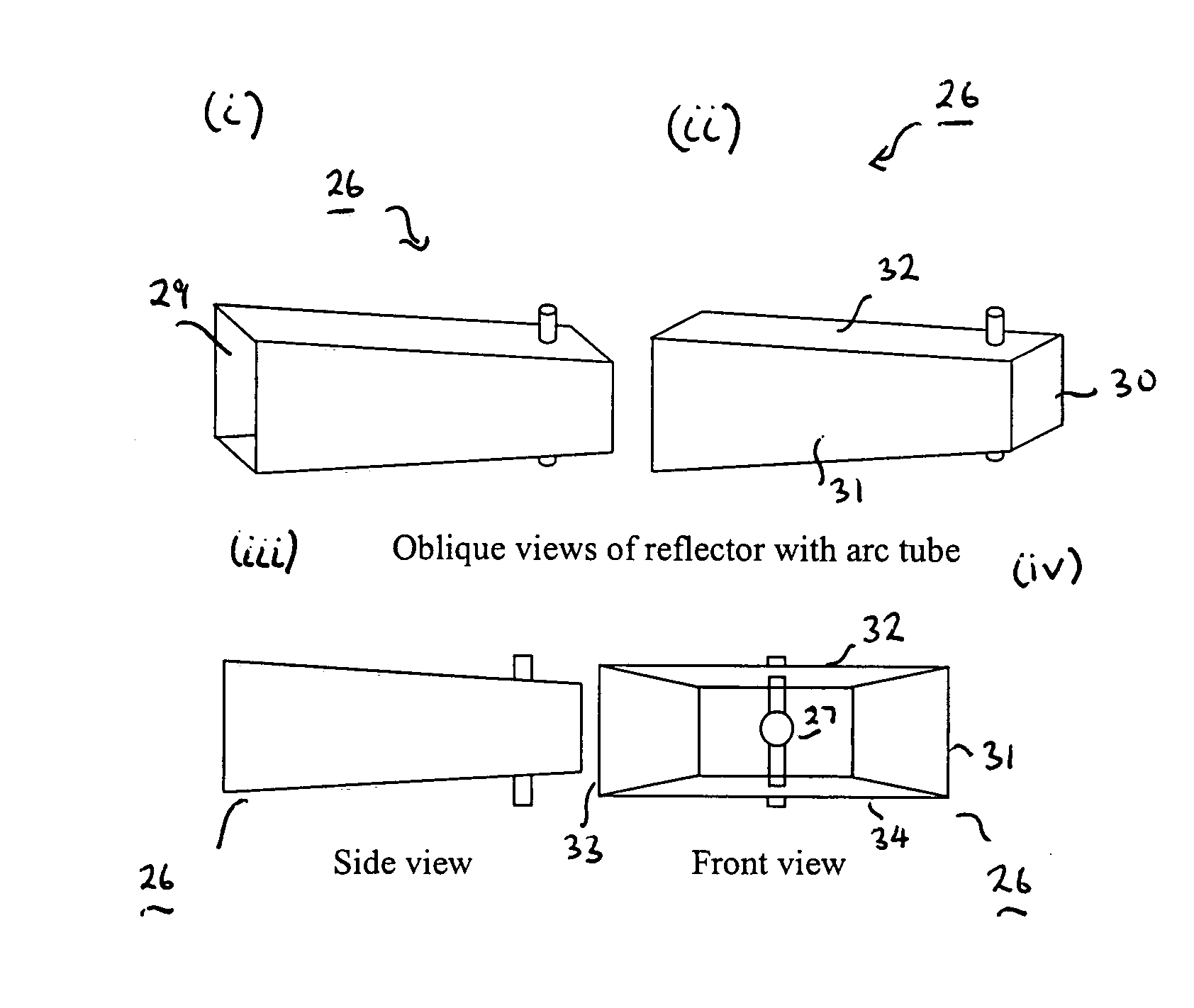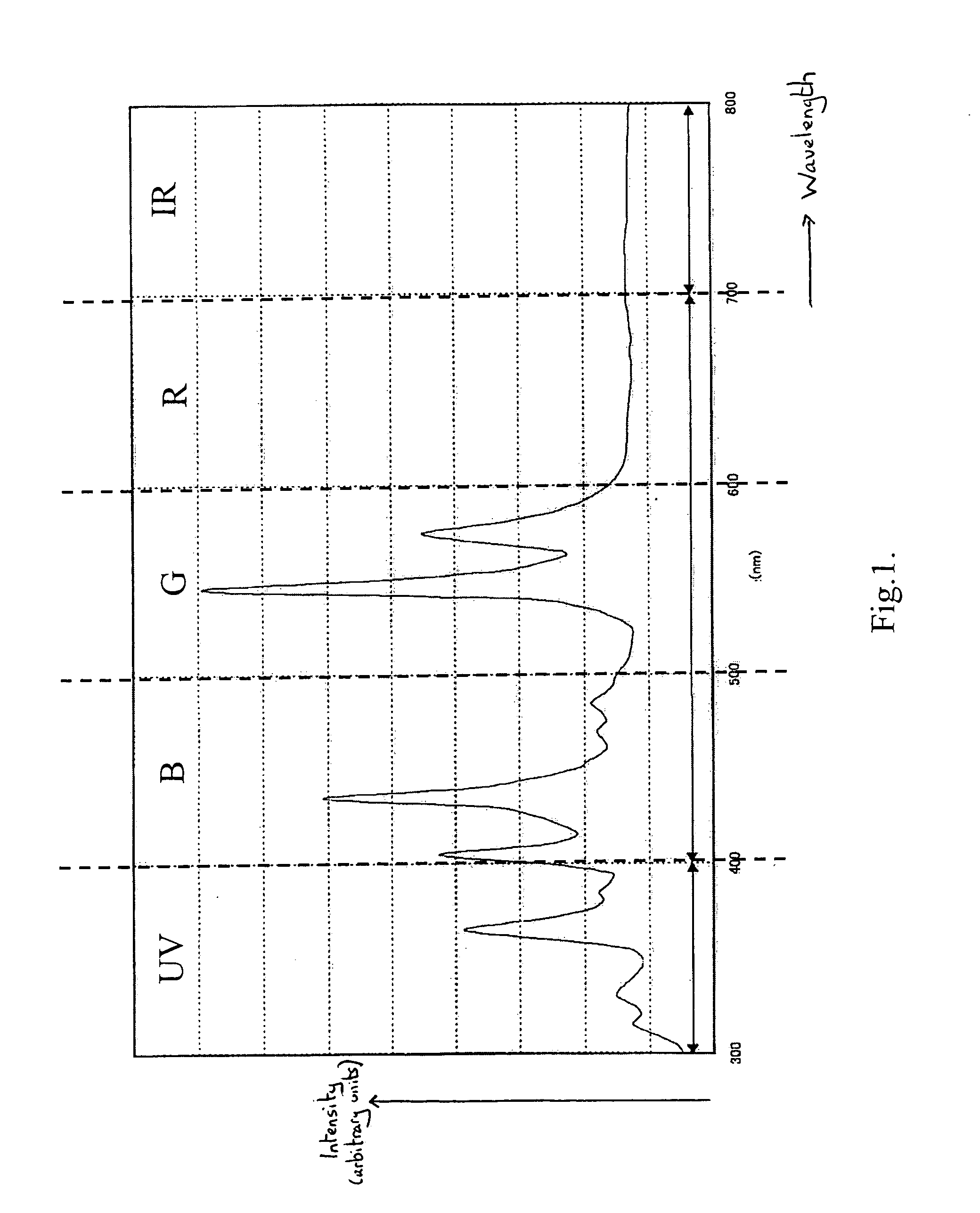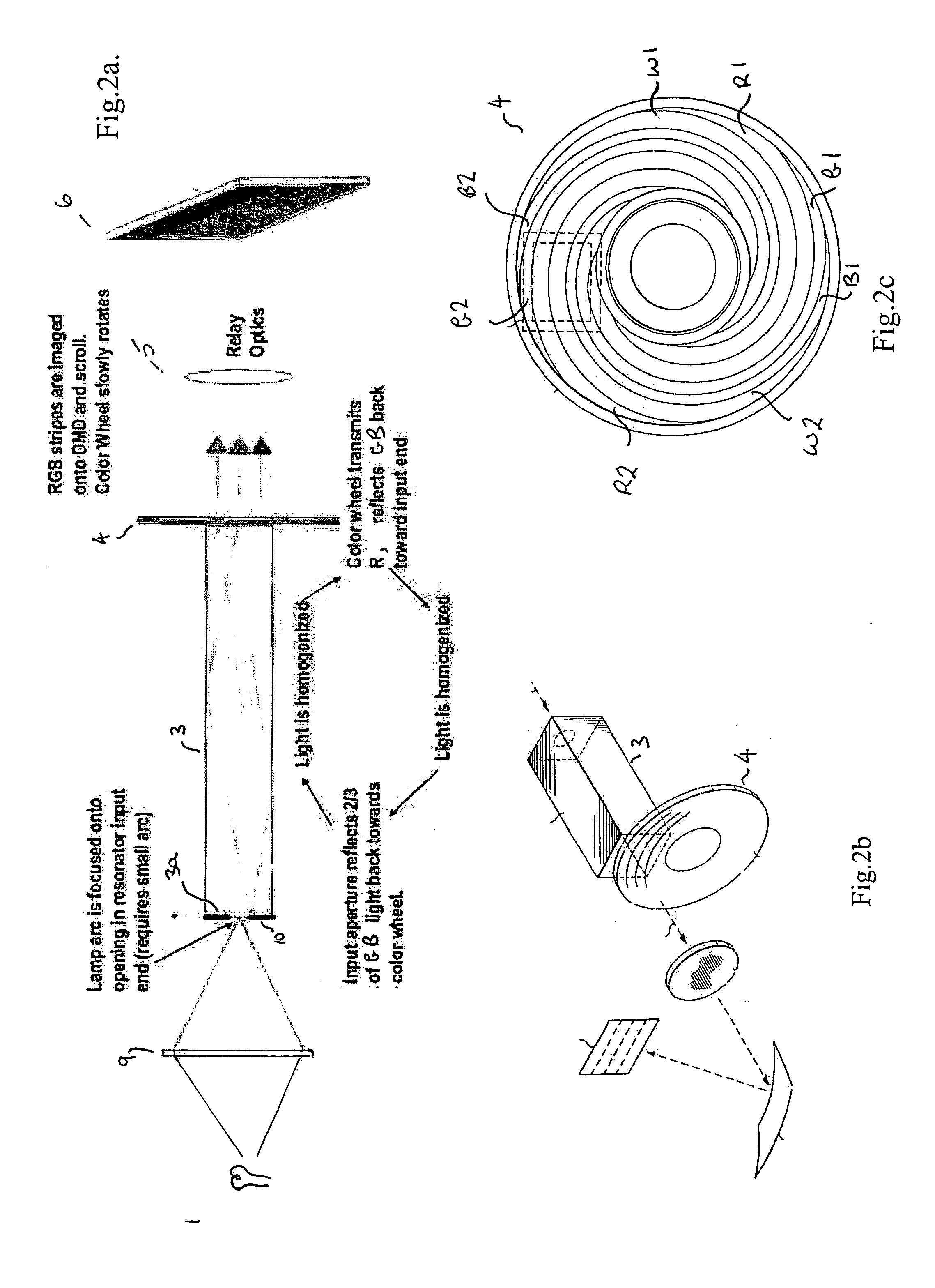Light source system and an image projection system
a technology of light source system and image projection system, which is applied in the field of light source system, can solve the problems of insufficient light intensity, waste of part of the illumination of the lamp, and loss of coupling between the various components of the system, and achieve good coupling and light coupling
- Summary
- Abstract
- Description
- Claims
- Application Information
AI Technical Summary
Benefits of technology
Problems solved by technology
Method used
Image
Examples
Embodiment Construction
[0097]FIGS. 8a(i) to 8a(iv) illustrate a light source system 26 according to a first embodiment of the present invention. The light source system comprises a light source 27 and an optical element 28 having a first end that is preferably closed and a second end that is open to define an output face 29. The light source 27 is mounted within the optical element 28, at or near the first end of the optical element, and is thereby spaced from the output face 29. The light source 27 may consist of, for example, a discharge tube, and may for example consist of a high-pressure discharge tube of the type well known and currently used in projectors. FIGS. 8a(i) and 8a(ii) are perspective views of the light source system, FIG. 8a(iii) is a side view of the light source system, and FIG. 8a(iv) is an end view of the light source system, looking into the optical element from the output face.
[0098] The optical element 28 is a non-imaging optical element. The optical element 28 does not form a rea...
PUM
 Login to View More
Login to View More Abstract
Description
Claims
Application Information
 Login to View More
Login to View More - R&D
- Intellectual Property
- Life Sciences
- Materials
- Tech Scout
- Unparalleled Data Quality
- Higher Quality Content
- 60% Fewer Hallucinations
Browse by: Latest US Patents, China's latest patents, Technical Efficacy Thesaurus, Application Domain, Technology Topic, Popular Technical Reports.
© 2025 PatSnap. All rights reserved.Legal|Privacy policy|Modern Slavery Act Transparency Statement|Sitemap|About US| Contact US: help@patsnap.com



